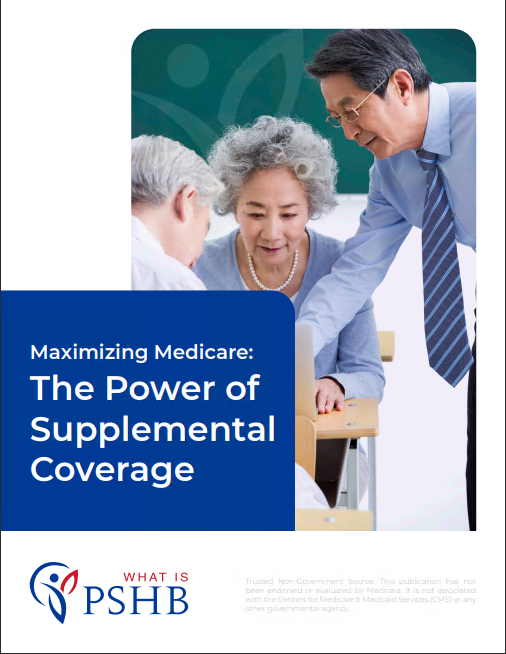Key Takeaways
-
The Federal Employees Health Benefits (FEHB) Program and the Postal Service Health Benefits (PSHB) Program are separate systems starting in 2025, with critical implications for your healthcare coverage.
-
PSHB introduces new Medicare Part B requirements and automatic plan transitions, which may affect both your cost and your eligibility for certain benefits.
Understanding the Shift: From FEHB to PSHB
If you’re a USPS employee or retiree, 2025 brings a significant change to your health coverage. The PSHB Program officially replaces FEHB coverage for Postal Service workers and annuitants. While the transition might seem straightforward on the surface, it carries several important distinctions that you need to know.
The PSHB Program was created under the Postal Service Reform Act of 2022 and is administered separately from the FEHB Program. The goal was to establish a dedicated system specifically for the Postal Service workforce. This separation brings both structural and procedural changes that directly impact you.
Who Is Affected by the Transition?
You’re affected by this change if you fall into one of the following categories:
-
You are a current USPS employee enrolled in an FEHB plan.
-
You are a USPS retiree or annuitant receiving health benefits through FEHB.
-
You are a family member covered under a USPS employee or retiree’s FEHB plan.
Starting January 1, 2025, all eligible USPS employees and annuitants will be enrolled in PSHB instead of FEHB, either automatically or by active selection during the Open Season that occurred in late 2024.
What Stayed the Same Between FEHB and PSHB
Before diving into what’s different, it’s helpful to know what hasn’t changed:
-
Federal Oversight: Both programs are administered by the U.S. Office of Personnel Management (OPM).
-
Open Season Timing: The annual enrollment period for both remains in November to December.
-
Plan Types and Coverage Tiers: You’ll still see Self Only, Self Plus One, and Self & Family options.
-
Government Contribution: The government still pays approximately 70% of the total premium cost.
-
Eligibility for FEDVIP and FEGLI: These separate benefit programs remain unaffected.
1. Dedicated Postal Service Enrollment System
Unlike FEHB, PSHB is exclusively available to Postal Service workers, retirees, and their eligible family members. This exclusivity means the risk pool is smaller but more tailored to USPS demographics. The benefit here is better alignment with postal-specific healthcare usage and needs.
However, it also means that any future adjustments to PSHB will be based on USPS-specific data—not the broader federal workforce. You should pay close attention to changes each Open Season, especially as the program matures.
2. Medicare Part B Requirement for Some Retirees
One of the biggest differences is the mandatory enrollment in Medicare Part B for certain Postal Service retirees and family members.
You must enroll in Medicare Part B to maintain your PSHB coverage if:
-
You are a USPS annuitant who is Medicare-eligible in 2025 or later.
-
You are a family member of a USPS annuitant who is also Medicare-eligible.
Exceptions to This Rule
You are not required to enroll in Medicare Part B if you:
-
Retired on or before January 1, 2025.
-
Are a current USPS employee as of January 1, 2025, and turn 64 before that date.
-
Live overseas or receive care through the VA or Indian Health Services.
Failing to enroll when required can result in a loss of coverage under PSHB, so this requirement carries significant weight.
3. Automatic Enrollment During Transition
During the Open Season from November to December 2024, if you were enrolled in an FEHB plan and did not actively select a PSHB plan, you were automatically placed in a corresponding PSHB plan offered by your previous provider. This ensured continuous coverage.
That said, automatic enrollment does not guarantee the new plan is the best fit for you. The corresponding PSHB plan might differ in cost-sharing, network size, or prescription drug benefits. Reviewing your plan materials every year remains essential.
4. Prescription Drug Coverage Enhancements
Another notable change is the integration of Medicare Part D drug coverage within PSHB plans for those eligible for Medicare. You now receive prescription coverage through a Part D Employer Group Waiver Plan (EGWP), which offers:
-
Lower out-of-pocket drug costs
-
An annual $2,000 out-of-pocket cap
-
A monthly payment option for prescription expenses
-
A $35 cap on insulin
This level of integration did not exist in FEHB plans and can lead to meaningful savings for retirees on multiple medications.
5. Changes in Cost-Sharing Structure
While the government contribution remains roughly the same, some PSHB plans have:
-
Higher deductibles for high-deductible plans
-
Lower copays for Medicare-eligible enrollees
-
Different coinsurance rates for out-of-network services
The shift in cost-sharing can impact your total out-of-pocket expenses. If you were previously in a low-deductible FEHB plan, you’ll want to pay close attention to the PSHB cost structure in 2025 and beyond.
6. Simplified Coordination With Medicare
PSHB is designed to coordinate more efficiently with Medicare. When you’re enrolled in both Medicare Part A and Part B, your PSHB plan often waives deductibles and reduces cost-sharing, creating a more seamless experience. This is a step up from the fragmented coordination some experienced under FEHB.
However, the efficiency only applies if you’re fully enrolled in Medicare. If you opt out of Part B when required, you’ll lose access to this benefit entirely.
7. Impact on Family Members
Family members enrolled under your plan must also comply with Medicare Part B enrollment if they’re eligible and subject to the same rules. Spouses, for instance, can’t maintain PSHB prescription coverage through EGWP without Medicare Part B if required to have it.
This means that your spouse’s or dependent’s decision about Medicare can impact your family’s overall health coverage through PSHB.
8. Limited Ability to Opt-Out and Return
Once you opt out of Medicare Part B (when required) or drop PSHB coverage tied to your retirement, returning isn’t guaranteed. Re-enrollment may only be allowed during a limited Special Enrollment Period and could leave you without coverage temporarily.
That’s why it’s vital to fully understand the implications before making any permanent coverage decisions. This wasn’t as restrictive under FEHB.
9. Online Access and Support
USPS employees and annuitants now use different online portals:
-
Employees: Access enrollment through LiteBlue.
-
Annuitants: Use KeepingPosted.org for plan information and resources.
Additionally, OPM and USPS created the PSHB Navigator Help Line at 1-833-712-7742 to assist with questions. This tailored support structure is more USPS-specific than the broader FEHB system.
10. Long-Term Cost Implications
Since PSHB is tailored to USPS, future cost adjustments will depend solely on Postal Service demographics and claims experience. You should expect:
-
Potentially more accurate premium rates based on your group
-
Less variability tied to the broader federal workforce
-
Unique plan updates that differ from federal counterparts
This could work in your favor—or not—depending on how healthcare utilization trends develop within the USPS population.
Making Sense of the New Landscape
The shift from FEHB to PSHB in 2025 marks a turning point in how you receive healthcare benefits as a USPS employee or retiree. The programs may seem similar on the surface, but the underlying mechanics, particularly around Medicare integration and eligibility requirements, are very different.
To protect your coverage and make the most of what PSHB offers, stay informed, review your options annually, and consider your family’s Medicare status carefully. These aren’t decisions you should delay or make without all the facts.
For help understanding how the PSHB Program affects you directly, get in touch with a licensed agent listed on this website for personalized advice and plan guidance.








